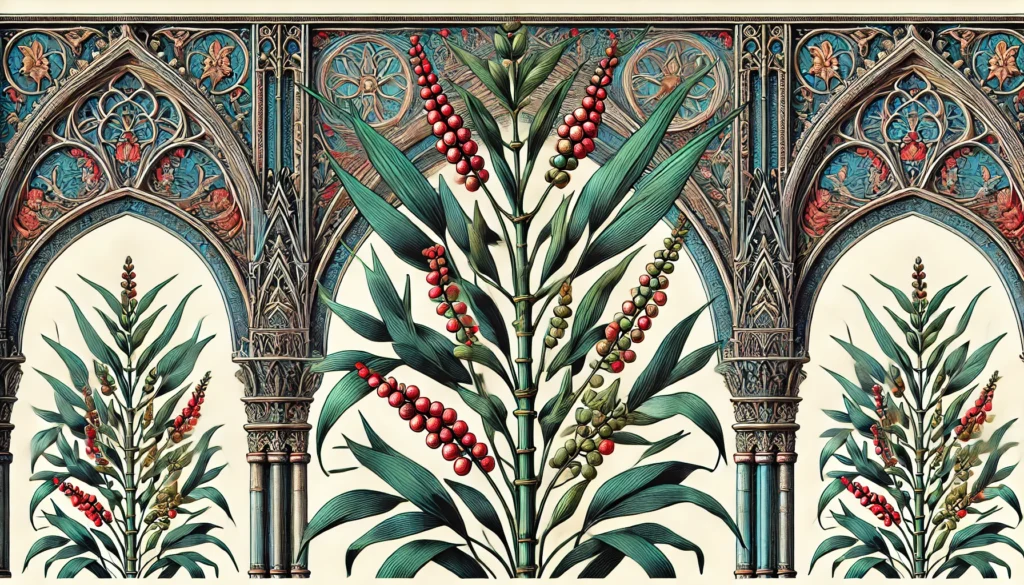

Home » Cat Plants » The Toxic Dangers of the Sacred Bamboo Plant to Cats

Sacred Bamboo (Nandina domestica), also known as Heavenly Bamboo or Nandina, is a popular ornamental shrub commonly found in landscaping. Despite its name, it is not a true bamboo but rather a member of the Berberidaceae family. While cats are not allergic to Sacred Bamboo, this plant is highly toxic to felines.
All parts of the plant, including the leaves, stems, and berries, contain cyanogenic glycosides, which can be fatal if ingested by cats.
Ingestion may cause mild gastrointestinal upset, but is generally not life-threatening.
Ingestion can result in mild symptoms like vomiting, diarrhea, or drooling. Rarely fatal but may require veterinary care.
Eating these plants can lead to more pronounced symptoms like abdominal pain, lethargy, or difficulty breathing. Veterinary intervention may be necessary.
Ingesting even small amounts can cause severe symptoms like organ damage, seizures, or cardiac failure without rapid treatment.
All parts of these plants are extremely poisonous to cats and can quickly lead to death, even with immediate veterinary care.
** Please note: Please note that toxicity level can vary based on the amount ingested and the specific cat. It's always best to keep these plants completely inaccessible to cats and seek immediate veterinary care or call the poison hotline if you suspect your cat has ingested any part of a toxic plant.
If a cat ingests any part of the Sacred Bamboo plant, they may experience a range of symptoms due to cyanide poisoning. These symptoms can appear within minutes to hours after ingestion and may include:
In severe cases, cats may suffer from respiratory failure, coma, or even sudden death.
If you suspect your cat has ingested Sacred Bamboo, seek immediate veterinary attention. Your veterinarian will likely follow these steps to diagnose and treat your cat:

A: Yes, the Sacred Bamboo plant, also known as Nandina, is harmful to cats. It contains toxic compounds such as cyanogenic glycosides, which can lead to serious symptoms like vomiting, difficulty breathing, and even seizures.
A: Symptoms of Sacred Bamboo poisoning in cats include vomiting, weakness, and in severe cases, respiratory failure. If your cat shows these signs, seek veterinary care immediately.
A: The Sacred Bamboo plant is highly toxic to pets, especially cats and dogs. Ingesting any part of the plant can cause life-threatening complications, making it important to keep it away from your pets.
A: Cats can recover from Sacred Bamboo poisoning with immediate veterinary treatment. The severity of symptoms may affect recovery time, but early intervention significantly improves outcomes.
A: It is not safe to grow a Sacred Bamboo plant in a garden with cats due to its toxicity. Consider planting safer alternatives like lavender or basil to protect your pets.
A: If your cat ingests the Sacred Bamboo plant, contact your veterinarian or an emergency animal clinic immediately. Quick action is essential to prevent severe complications and ensure the best chance of recovery.
Sacred Bamboo is native to eastern Asia, including China and Japan, where it has been cultivated for centuries. It was introduced to the Western world in the early 19th century and has since become a popular ornamental plant in many countries due to its attractive foliage and bright red berries.
Despite its toxicity to pets, Sacred Bamboo continues to be widely used in landscaping and is often found in gardens, parks, and public spaces. It is important for cat owners to be aware of the risks associated with this plant and take steps to prevent their felines from accessing it.
Please note: The information shared in this post is for informational purposes only and should not be considered as veterinary medical advice.
🐾 A hilarious or heart-melting cat video
🐾 Our latest paws-on review of a cool cat toy